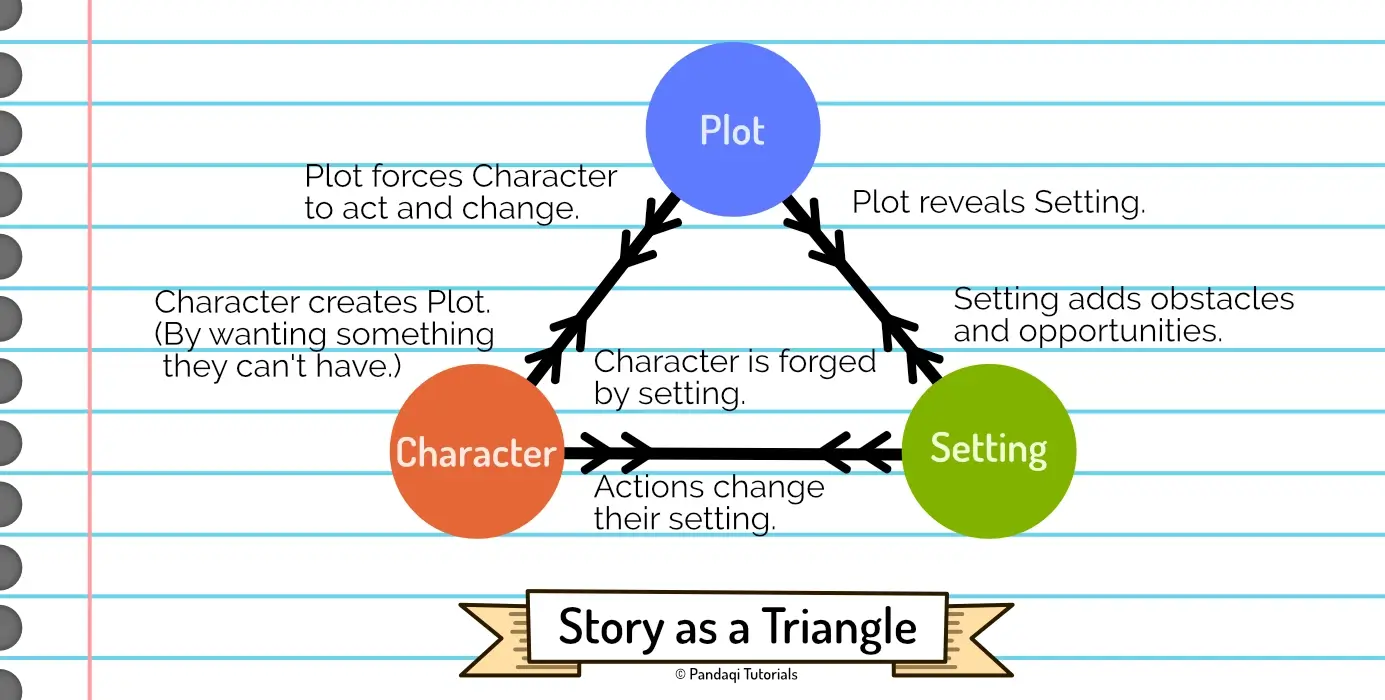Introduction
Welcome to the course on Worldbuilding! At first, I wanted to call this one Setting. It’s the more generally applicable term for, well, the setting in which a story takes place. But for most, this concept is known under the term “worldbuilding”, especially thanks to fantasy authors who will spend the most time working on this.
That’s why I used that name for this course. The first few chapters are general advice on choosing and showing a good setting, but then we’re already done. What comes after that? Many chapters about worldbuilding (for speculative fiction; fantasy or sci-fi) and magic systems.
How this course works
Other courses about writing were practical. They gave you tools, then asked you to write one story with the tool you just learned. That’s the best way to learn, especially as there are many tools or “ideas” about how to plot or create character.
For worldbuilding, however, there isn’t such a large swath of tools. Most techniques come down to the same thing, and besides that you can literally invent anything. After millennia of telling stories, we have quite a good grasp on what a well-structured plot or character should be. Maybe one day we’ll invent a “worldbuilding structure” that humans enjoy the most. But for now, we don’t have one!
That’s why this course is rather short and does not do these practical challenges. Once I’ve told you the general process, including tips and advice, you can just … apply that to every story from now on!
Before you start
If you haven’t already, I suggest reading the Storytelling course first. Setting cannot stand on its own. It’s impossible to explain my best tips for setting without also dealing with plot or character. The image below shows how stories are an intersection of those three parts.

That’s why I wrote that practical course that covers the basics of all elements at the same time. Courses such as this one, focusing on one aspect of stories, are bonus tips and challenges once you’re done with Storytelling. The Storytelling course already links to this one (for further reading) whenever applicable!
Let’s get started!
- 1 Introduction
- 2 What is worldbuilding?
- 3 The Purpose of Worldbuilding
- 4 Tip of the Iceberg
- 5 Communicating your Setting I
- 6 Communicating your Setting II
- 7 Deep over Shallow
- 8 Step 1: Pick a Twist
- 9 Step 2: Figure out Basic Needs
- 10 Step 3: Think of the Implications
- 11 Step 4: Finishing Touches
- 12 Magic Systems I
- 13 Magic Systems II
- 14 Conclusion
Want to support me?
Buy one of my projects. You get something nice, I get something nice.
Donate through a popular platform using the link below.
Simply giving feedback or spreading the word is also worth a lot.